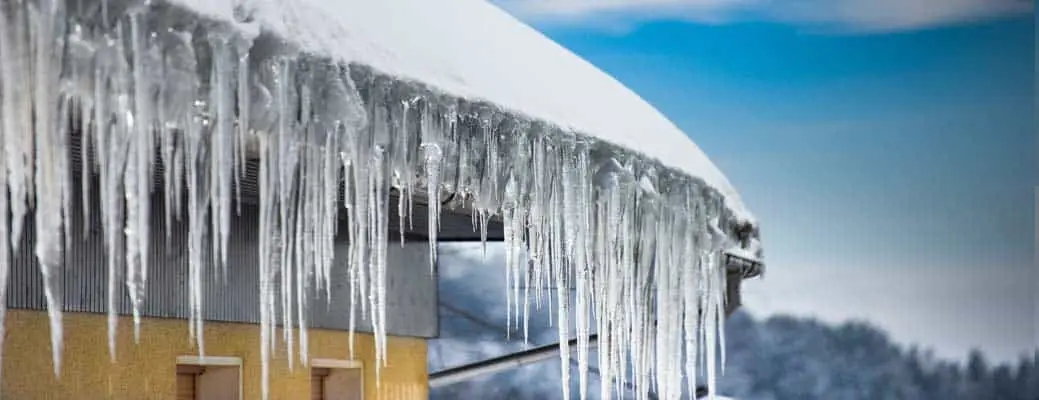How to Prevent Ice Dams on Your Roof


Winter is coming! And although we love to hear those sleigh bells ring and celebrate the holidays and the new year, we don’t like the icicles that can build up on our roofs and cause expensive damage to our homes. Fortunately, a bit of preventive maintenance can go a long way towards staving off ice dam damage. Here’s how to keep your house safe and secure all winter long.
Icicles hanging from the house may be a thing of beauty, but they also serve as a warning sign for ice dams. That's because the same conditions that allow icicles to form — snow-covered roofs and freezing weather — also lead to ice dams: thick ridges of solid ice that build up along the eaves. If left untreated, you may face a major roof repair — dams can tear off gutters, loosen shingles, and cause water to back up and pour into your house.
If you’re able to and it’s safe, you can shovel or rake your roof and clear it before snow is able to accumulate and cause damage. No snow means no melting, preventing ice dam damage from ever becoming a possibility. This is hard work, however, and you may need professional assistance, but there are many companies that specialize in ice dam prevention and removal.
Trees provide shade and can cool the area beneath them by several degrees, which can be the tipping point toward the creation of ice dams. The best way to prevent ice dams from forming in the first place is to keep the roof the same temperature as the environment surrounding it, so trim any trees that hang above your roof and provide shade over your house.
Like Goldilocks, the roof shouldn’t be too hot and cause melting, and it shouldn’t be too cold and allow cooler spots for melting snow to freeze. It should be just right. Heat escapes through a house’s ceiling or attic, melting snow across the roof and often creating a ridge of ice along the edges of the roof. This ridge can expand, trap water behind it and — voila! — create an ice dam. To keep heat where it belongs — in your house and not in your roof or your attic — you can improve the insulation to minimize the amount of heat that travels to your ceiling, or add ventilation so that heat can escape rather than get trapped. Or, you can turn down the thermostat so there’s little heat to rise in the first place.
A metal roof ensures you won’t have to deal with ice dams. These types of roofs work because, by virtue of being metal, they don’t give ice dams anything to cling to, and they’re also less likely to leak. If a metal roof isn’t possible for your home, then ice and water shielding may be an option. This thin, rubberized asphalt membrane can be placed under a shingled roof and provide decent protection from water leaks and ice dam damage.
In an emergency, where water is flowing into the house structure, making channels through the ice dam allows the water behind the dam to drain off the roof. On a warmer day, hose the dams with tap water, working upward from the lower edge of the dam. But be sure to follow up with a professional, as this is just a temporary fix and the channels will only remain effective for a few days.
Sometimes, despite our best intentions, the worst still happens. As you prep your house for winter, take some time to examine your homeowner’s policy to understand what’s covered — and what isn’t.
You never know when your house may be damaged by a storm. Contact your local Farm Bureau agent to make sure you have the protection you need.